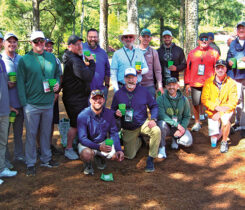Keeping up with The Jones: Looking at the new Department of Labor regulation
 I did something this month I’ve never done before in my professional career — I sent the cover story I was about to publish to my human resources director.
I did something this month I’ve never done before in my professional career — I sent the cover story I was about to publish to my human resources director.
Associate Editor Grant B. Gannon and I wrote the cover story, “Pay up or go home,” together. As we discussed the project at the PGA Championship, we agreed that we didn’t want the story to be written in the voice of the HR department. We wanted it to be written in the perspective of those who it was going to impact: superintendents and assistant superintendents.
I’m an “easier to ask for forgiveness than permission” type guy. Especially when it comes to showing my work to someone before it gets printed. But in this case, I knew it would be a smart move to call HR — that our HR director, Debbie Pipik, would be a savvy advisor.
It wasn’t long after I hit send on the email than her name popped up on my caller ID. I took a deep breath and got ready for her feedback.
She gave her approval to the article, telling me our HR-speak was sound. And then she said, in a whisper, “Seth, just so you know… this whole thing is going to be a nightmare when it goes into effect.”
That was when I learned that a big part of next week’s annual North Coast Media publisher/editor meeting will focus directly on this new Department of Labor regulation, and what it means for my company.
In a nutshell: Once Dec. 1 rolls around, salaried workers who make $47,476 a year and under are entitled to time-and-a-half overtime pay. The previous number was $23,660. So now we’ll have 4.2 million American workers who fall into this new, much larger window, and are now entitled to overtime.
Knowing that assistant superintendents, irrigation techs, spray techs, assistants-in-training, all work hours upon hours, especially during the golf season, “nightmare” might be the right term for what will happen. Or, it could be a dream come true — maybe some workers will start getting paid what they’re worth. So long as they can keep their job, that is.
What will it mean for your operation? Every course will be different, but every source we talked to for the story got wide-eyed and said this was a hugely important matter for their operation.
“We’re going to have to start managing differently, or we’re going to have to do things different with the budget, it’s one or the other,” Nate Herman, assistant superintendent at Victoria National in Newburgh, Ind., told me while we were both at the PGA Championship. The crew there averages 60 hours a week in season. While the new overtime regulation won’t effect a lot of people on the Victoria National crew, the ones it will, he says, “Are really key guys.”
Herman told me that he could recall early in his career when he and a colleague calculated how much they were making based on all the hours they were putting in on a busy summer. The total was $2 an hour.
I didn’t leave a zero out. Two dollars. An hour.
That’s tough. If you don’t absolutely love what you’re doing, why would you keep at it? Unless maybe their was a promise of promotion — a superintendent job in the future, more pay, benefits. But as one of our sources says, that’s not a guarantee anymore.
There’s a saying that goes, “If you love what you do, you’ll never work a day in your life.” But for the men and women who are putting in all these hours, even if they love what they do, they still need to get paid for their hard work.
A lot more than $2 an hour.
To read the August cover story on the new labor law, click here.











